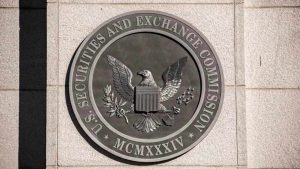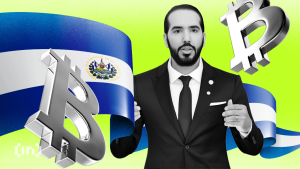Crypto cards facilitated $3B payment volume since 2021 exchange deals — Visa exec

The integration of conventional payment cards with cryptocurrency exchanges is playing a crucial role in driving the adoption of digital assets, according to a Visa executive.
Speaking to Cointelegraph reporter Ezra Reguerra during a panel at the Blockchain Economy Dubai Summit, Visa’s vice president, head of innovation and design, Akshay Chopra, highlighted the role that Visa cards have played as a bridge between fiat currencies and cryptocurrencies in recent years.
According to Chopra, using cryptocurrencies as a means of payment for everyday items like a cup of coffee at a cafe is still not ubiquitous. To tackle this challenge, Visa partnered with 75 of the biggest cryptocurrency exchanges in 2021 to allow them to issue Visa cards.
This opened up a network of some 80 million Visa merchants that could, by extension, serve customers who prefer to use cryptocurrencies as a means of payment. Chopra tells Reguerra:
“Building that bridge alone in 2021, and these numbers haven’t really been made public, facilitated $3 billion of payment volume.”
Chopra highlighted this as one of several opportunities for conventional financial institutions to tap into the wider Web3 ecosystem.
Related: Visa taps into Solana to widen USDC payment capability
Payments settlement between financial institutions remains another avenue ripe for disruption and innovation through blockchain-based solutions. Chopra says existing protocols like the SWIFT payment system still have limitations, including not being fully functional 24 hours a day:
“Banks have trillions of dollars of transactions with each other at the end of the day, but there is a cut-off time where you simply cannot transact internationally. It’s a big pain point, and it’s also expensive and inefficient.“
Akshay highlights a pilot carried out with Circle using USD Coin (USDC), which enabled a number of cryptocurrency exchange partners to settle payments with USDC at the end of a given day:
“It’s cheaper than traditional methods, it happens 24/7, and it’s innovative. You send the USDC balance, and Visa custodies the funds on the back end of the Ethereum blockchain.”
Regulations remain a hurdle for mainstream financial institutions to truly tap into blockchain technology and cryptocurrency-based payments. However, Akshay believes that progressive regulatory environments in jurisdictions like the United Arab Emirates have benefited industry participants more than reactive regulations in countries like the United States.
“When they set up regulatory frameworks, they invited the industry to talk about what it needs, but also what the future might look like in a few years so that regulations are developed well ahead of time.“
Visa made headlines in April 2023 with the launch of a crypto product roadmap to drive the adoption of stablecoin and public blockchain payments by mainstream financial institutions.
The company is also set to invest $100 million to explore innovative artificial intelligence-powered products and solutions focused on payments and commerce through Visa Ventures.
Magazine: The Truth Behind Cuba’s Bitcoin Revolution: An on-the-ground report













